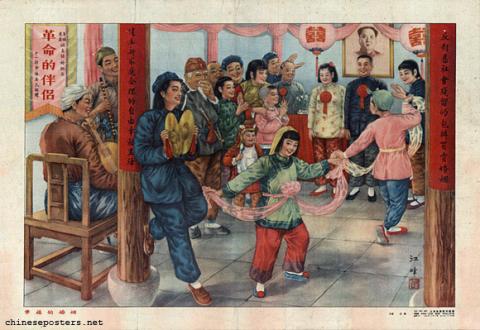Jiang Feng (1910-1982) was born in Shanghai; his original name was Zhou Xi. A woodblock artist who participated in Shanghai in the founding of Lu Xun's Creative Print Movementi n 1931, Jiang was jailed several times in the 1930s as a Communist activist. In 1938 he went to Yan'an, where he worked as a printmaker and then as a teacher and party cadre.
Between 1949 and 1957, Jiang held dominant positions in the Chinese Artists' Association and the Central Academy of Fine Arts. In the early 1950s, he introduced into the academies the Yan'an concept of art education, which required students to learn Marxist and Mao Zedong Thought and to devote considerable amounts of their time to working with peasants, workers and soldiers. Jiang also introduced the Russian system of art education, which stressed drawing from life and from plaster casts of sculpture, and acquiring the technical facility needed to paint with oils and watercolors; he also initiated the institution, adopted from Russia, of middle schools attached to major art academies. Because of his dedication to printmaking, the medium was granted independent departmental status within academies. His preference for Western modes of representation led to his being criticized in 1957 for being, among other things, a Rightist. He was honored in 1979, after the Cultural Revolution had ended, with the presidency of the Chinese Artists' Association, although he had not held an official position since 1957.



